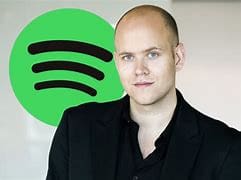
The Scandinavian Leadership Model
I read an article in Fortune magazine recently titled “Daniel EK dashes “magical” CEO illusions and says he’s “probably the least powerful person at Spotify thanks to Scandinavian leadership model.” For those who are wondering, Daniel EK is the current CEO of Spotify. Curiously I wanted to understand more about this leadership model as I assumed from the article that it is simply a form of distributed leadership.
Three central features of the Scandinavian Leadership Model
- There is a high level of employee involvement in the decision-making process.
- The organizations are flatter with a short distance between managers and employees.
- Employees have space to take the initiative and work independently but with ample accountability.
- The inclusivity of employees contributes to high levels of employee retention.
Scandinavian leadership is based on teamwork and the notion that every employee has a voice, responsibilities, and influence1. The emphasis is on delegating effectively and not micromanaging projects. Inherent in this model is a large amount of trust in employees to execute in alignment with company goals.
Subtle Distinctions by Country
According to a survey conducted by three sister organizations in Sweden, Denmark, and Norway, there are more in common with their approaches to leadership than there are differences2. The Norway leadership style is more democratic while they practice a more targeted leadership style in Denmark. Sweden practices a relationship-oriented leadership style which is what Daniel EK is eluding to in the Fortune article. Per EK, “I probably make the least amount of decisions in Spotify.” I also found it enlightening that he chose to highlight the work of assistants in the article. “Almost all powerful people have assistants of some kind and they are the ones who decide who this person is meeting or not meeting and can really help shape whatever happens in that person’s day.”
Challenges of the Scandinavian Model
- Balancing the need to be efficient and flexible while involving employees in the decision-making process can be time consuming2.
- There can be a lack of clear structure in a non-hierarchical organization.
These challenges are not to be dismissed, especially in a market reality that rewards speed. While I do like the fact that there is more retention of talented employees, at what cost in the marketplace is that retention? Spotify has implemented several strategies to stay ahead of the competition but as of January 2024, they have yet to turn a profit even though they have been operating since April of 2006. In my opinion, Daniel EK’s words in this article may be at the root of the problem at Spotify. Distributed Leadership requires the communication of clear and consistent vision and values to guide the actions of employees. If Daniel EK sees himself as the least powerful person at Spotify, then who is “preaching the Spotify gospel” to its employees to assure alignment?
